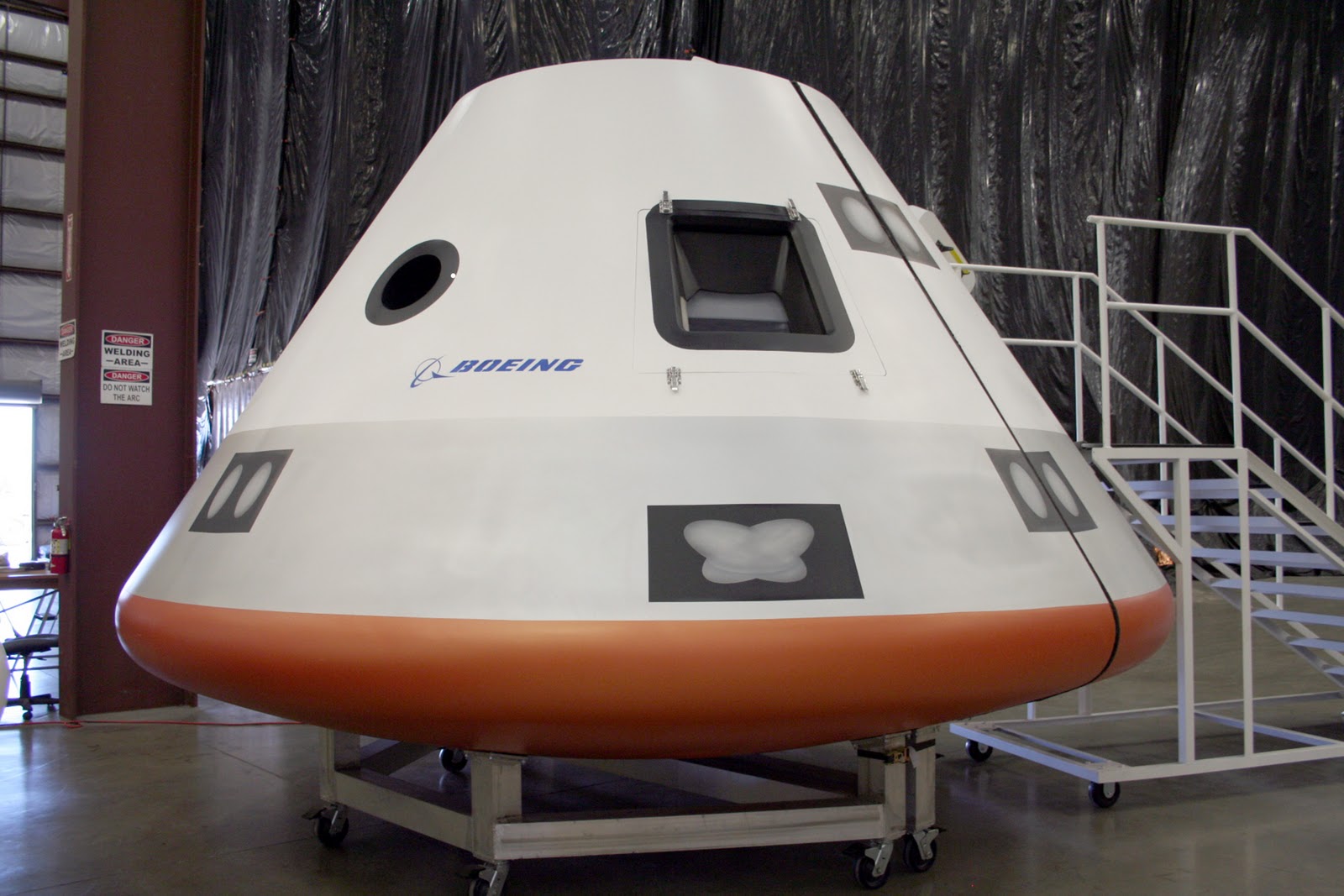Boeing:
September 12, 2011
Space capsule tests aim to ensure safe landings
By Ed Memi
In the Mojave Desert in southeast California, Boeing and teammate Bigelow Aerospace recently conducted a series of successful air bag drop tests for the Crew Space Transportation (CST)-100 mock capsule, which, like airbag tests done in cars, will help ensure that the seven crew members inside the capsule land safely after reentering the Earth’s atmosphere. Boeing is one of four companies competing to develop a commercial crew transportation system that will restore the United States' capability to provide access to the International Space Station by 2016.
After reentering the atmosphere, the CST-100's three main parachutes open at an altitude of approximately 12,000 feet. When the capsule reaches about 5,000 feet, the base heat shield drops away and six air bags inflate with a mixture of air and nitrogen two minutes before landing to cushion the passengers from the impact.
For the drop tests, the team used a mobile drop rig built from a semi-truck and a trailer-mounted crane to drop the test capsule and be able to evaluate a combination of horizontal and vertical drop impacts, as shown in the video above. The horizontal rig used for these drop tests was designed, built, and operated by Bigelow Aerospace.
The drop tests provided information about the test capsule and its new electronic measurement system, while collecting preliminary data to refine engineering models to ensure a safe landing.
“These tests allowed us to do early computer simulation models and begin validating those models,” said John McKinney, the Landing and Recovery System lead for Boeing’s Commercial Crew Development program. “The Landing System team also is acquiring valuable hands-on experience in understanding air bag systems and maturing the technology for application to the Crew Space Transportation capsule.”
Using an array of high-definition cameras and electronics to measure acceleration, pressure and movement, a laser triggers the drop of the test capsule. The test capsule’s vertical drop simulates a 27-feet-per-second descent of the deployed parachute, while the horizontal movement mimics the impact of the wind at speeds varying from 10 to 30 feet per second.
“In October, we’ll have a whole new series of tests with 12 new airbags, and we will do extensive drop tests at White Sands Missile Range [in New Mexico], where the CST-100 will actually land,” said McKinney. He also said there will be approximately 20 tests that will allow this test data to be used to verify that simulation models are accurate.
The air bags, manufactured by ILC Dover, a leader in inflatable products, use the same technology as the Mars Pathfinder and Mars Exploration Rover programs. Those programs were responsible for the Sojourner, Spirit and Opportunity rovers on Mars. McKinney, an expert in air bag design, analysis and testing for the past 15 years, has worked on NASA’s Mars Pathfinder and Orion capsule projects.
Boeing is conducting the testing under the second round of its Commercial Crew Development Space Act Agreement with NASA. The CST-100 can carry up to seven people and will fly people to low-Earth orbit destinations such as the International Space Station and Bigelow Aerospace’s planned space station. As part of the second round, Boeing will also test the capsule’s launch abort engine, emergency detection system and propellant tanks and test the vehicle in a wind tunnel.
Parabolic Arc:
Video: Boeing Tests CST-100 Air Bag Landing System


